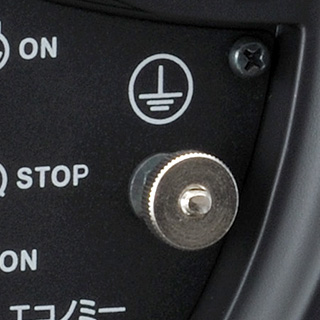Frequently Asked Questions concerning features and specifications
Definitions of the terms described in the catalog, answers to any questions on the specifications of each model.
01
- Use of "unleaded gasoline" is mentioned in the catalog, but what is unleaded gasoline?
- It has same meaning as "regular gasoline." It can be purchased at a gas station.
02
- How many hours of operation are offered by a full fuel tank?
- Refer to the "Specifications Table" in the catalog. For example, in the case of the EF1000iS model, the generator can work for approximately 4.3 hours at the rated load. When using a quarter (approximately 225 VA) of the rating, operations can be performed for approximately 12 hours.
03
- What is an "inverter"?
- An "inverter" is a device that converts DC power into AC power. In an "inverter generator", a three-phase alternating current produced by the generator is first converted to direct current and then converted back into alternating current by the inverter. This allows for the generation of high-quality electricity equivalent to that of a household power source. Furthermore, in addition to offering a reduced size and weight as well as improved fuel efficiency with low noise, this design has the merit of providing variable frequency. Refer to the page "What is an inverter" for more detail.
04
- Although advertised as a quiet generator with silent design, to what extent is it quiet?
- The inverter generator adopts an economy-idling device to set the required minimum engine-rotation speed depending on the load (at all times, a conventional generator is rotated at 3,000 rpm/min at 50 Hz and 3,600 rpm/min at 60 Hz, as specified). In addition, a covered generator that makes full use of our proprietary technology in various places, such as intake and exhaust, cooling, and soundproofing materials, realizes quiet operation.
- *
- In the case of a 1/4 load, the EF900iS model produces a noise level of 47 dBA with economy-idle ON. It is believed that the noise level in a general office is 50 dBA, while that at a distance of 1 m away from a normal conversation is 60 dBA, and that in a bustling shopping district is approximately 70 dBA.
- *
- Sensing of sound greatly varies depending on the person, as well as on the atmosphere and the environment; it is therefore judged not on an absolute, but rather a relative, scale.
05
- What is "Ground line for electric shock prevention?” Is there a danger of an electric shock if the generator is not grounded? Is the generator equipped with an "Earth leakage breaker for electric shock prevention?”
- A shock prevention system referred to as a “floating system” is adopted in the portable generator. This system eliminates the need for grounding and thereby eliminates the danger of an electric shock. Therefore, typically, it is not necessary that a generator be grounded. However, the generator should be grounded via the grounding pole if the "Earth leakage breaker for electric shock prevention” is externally connected to a generator.
*It should be noted that the Canadian specifications do not require the adoption of the floating system. Thus, the generator designed and manufactured using the Canadian specifications does not have a “floating system.”

06
- It is said that with “high-octane gasoline,” fuel consumption is better and output is improved. Is that correct?
- During the design stage of the engine, it is decided whether regular or high-octane gasoline is to be used. There is no particular problem with using high-octane gasoline in an engine with regular specifications, but it does not improve fuel economy or output.
07
- It is said that with “high-octane gasoline,” fuel consumption is better and output is improved. Is that correct?
- During the design stage of the engine, it is decided whether regular or high-octane gasoline is to be used. There is no particular problem with using high-octane gasoline in an engine with regular specifications, but it does not improve fuel economy or output.
08
- What is meant by the "API classification," "SE-class," and "SAE10W-40" for engine oil?
- For quality classification of 4-stroke engine oils, there are grades SA–SM, as classified by the American Petroleum Institute (API). In a Yamaha generator, oils of grades SE or higher (SF, SG, SH, etc.) should be applied.
The viscosity of oil varies with the temperature; it is stiff at low temperatures and becomes soft at higher temperatures. SAE (US Society of Automotive Engineers Inc.) 4-stroke engine-oil viscosity classification = (W = Winter)
09
- There is no AC breaker attached to the inverter generator, so how do I act in case of overload?
- The overload breaker of the inverter generator functions electronically. If the overload-warning lamp (red) is lit in the state of overload, the generator will stop the electricity supply automatically, but the engine will not stop. To resume power generation, stop the engine once. Check the load again and restart the engine below the rated load. The overload warning lamp (red) will automatically turn off.
10
- The noise level is expressed in “dBA.” What does that mean?
- dB = decibels and A = is the audible range that can be heard by the human ear (decibel = horn). Noise measurement of a generator is performed as specified in JIS-Z-8731 and is the value measured from a distance of 7 m from the generator at a height of 1.2 m.
11
- Is it possible to charge a rechargeable power tool (such as a drill) using the generator as a power source?
- Not recommended.
There are many types of batteries such as lithium-ion, nickel–hydrogen, and nickel–cadmium batteries. The voltage, frequency, etc., of the power supplied from the generator may be unstable, making it likely to cause severe damage to the electronic components in the charger.